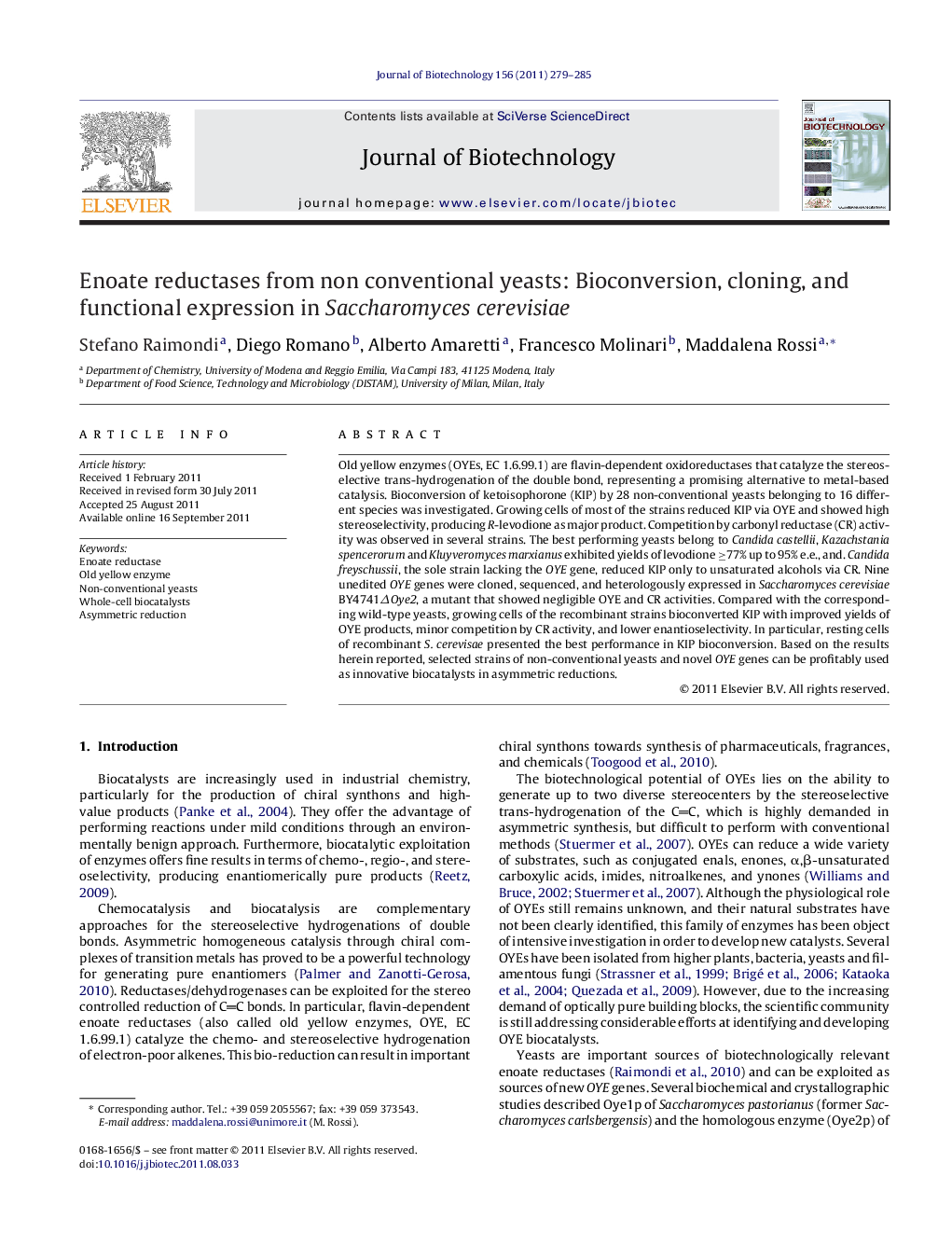| Article ID | Journal | Published Year | Pages | File Type |
|---|---|---|---|---|
| 23808 | Journal of Biotechnology | 2011 | 7 Pages |
Old yellow enzymes (OYEs, EC 1.6.99.1) are flavin-dependent oxidoreductases that catalyze the stereoselective trans-hydrogenation of the double bond, representing a promising alternative to metal-based catalysis. Bioconversion of ketoisophorone (KIP) by 28 non-conventional yeasts belonging to 16 different species was investigated. Growing cells of most of the strains reduced KIP via OYE and showed high stereoselectivity, producing R-levodione as major product. Competition by carbonyl reductase (CR) activity was observed in several strains. The best performing yeasts belong to Candida castellii, Kazachstania spencerorum and Kluyveromyces marxianus exhibited yields of levodione ≥77% up to 95% e.e., and. Candida freyschussii, the sole strain lacking the OYE gene, reduced KIP only to unsaturated alcohols via CR. Nine unedited OYE genes were cloned, sequenced, and heterologously expressed in Saccharomyces cerevisiae BY4741ΔOye2, a mutant that showed negligible OYE and CR activities. Compared with the corresponding wild-type yeasts, growing cells of the recombinant strains bioconverted KIP with improved yields of OYE products, minor competition by CR activity, and lower enantioselectivity. In particular, resting cells of recombinant S. cerevisae presented the best performance in KIP bioconversion. Based on the results herein reported, selected strains of non-conventional yeasts and novel OYE genes can be profitably used as innovative biocatalysts in asymmetric reductions.
► Detailed analysis of stereoselective reduction of ketosiophorone by 28 non conventional yeasts. ► Cloning and sequenceing of 9 novel genes encoding old yellow enzyme. ► Heterologous expression in S. cerevisiae. ► Recombinant whole-cells biocatalysts for asymmetric reduction.
